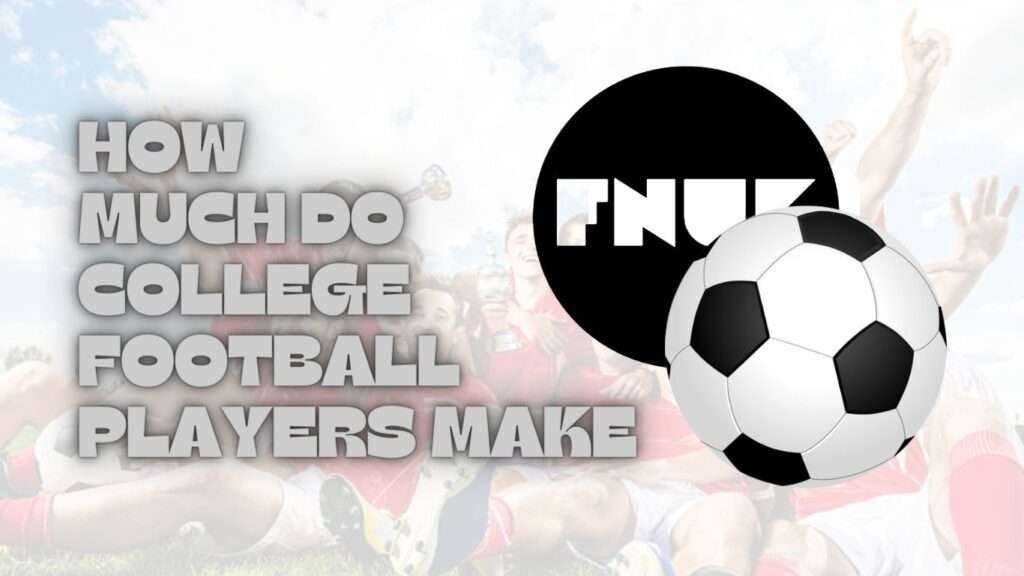American college football has been a hit with fans across the country as stadiums have been full every weekend and millions have watched on television to support their respective institutions. That said, the subject of player compensation is still a hot button issue in 2024.
The NCAA is considering allowing college football players to make money on their names, images, and likenesses, and understands just how much these players are already paid and why it’s so important.
Understanding NCAA Regulations
In order to declutter the NCAA pay system we need to dive into NCAA regulations which were not documented before this job. The NCAA made a major shift in 2024 and permitted athletes to earn money off their name, image and likeness (NIL).

This was a significant change, one that would allow student athletes to make money while still in school.
College athletes were formerly banned from earning any kind of revenue beyond their scholarships. This change allows players to have endorsement deals, sponsored events and even create their own merch.
Scholarships: The Foundational Support
Scholarships are the crux of player compensation. These scholarships cover the costs of tuition, room and board and other educational accessory expenses.
For a lot of athletes, this money means the difference between going to college or not going at all.
A full-ride scholarship can be worth $50,000 per year or more to an institution in 2024.
Grants and scholarships are great, but even with that, with the schedule being so demanding, there is limited time for a part-time job. This is where stipends and other stipulations regarding pay come in.
Stipends and Cost of Attendance
When combined with scholarships, most colleges provide stipends that are greater than-or equal to-the cost of attendance. The slight provision allotted for this is usually around $2,000- $5,000 a year
They aid in covering everything from books, transportation and personal expenses.
While in some cases it also extends to additional benefits such as meal plans, health insurance, and academic support that the universities make available, all of which further from the compensation package for the athletes efficiently.
The Goldmine of Endorsements
The biggest difference in 2024 is that players may be able to profit off of endorsements. Brands want to work with popular athletes and marketable players can potentially earn significant income from endorsements.
A star college quarterback could justifiably ink a deal with a sportswear giant worth $100,000 or more per year, for example.
It’s not just sports brands – endorsements! Imagine players partnering with local shops or appearing in advertisements or even their social media growing into a source for money.
The possibilities are endless and those really marketable athletes will do the best for themselves.
The Impact on Universities
Universities could benefit-player compensation College athletes can now participate in name, image and likeness (NIL) deals, requiring colleges to maintain a level of NCAA regulation.
You will have difficulties keeping financial fairness between the military of athletes and it is almost feasible to deal with each athlete similarly so some gamers will get greater time and reimbursement than other players.
Colleges, in turn, face the responsibility to find a compromise in aiding athletes in securing their financial advantages and in upholding the amateurism of collegiate sports. Sometimes this is a thin line to balance.
The Players’ Perspective
From a players’ perspective, these developments can be life changing. It is a chance for a lot of them, a chance for them to provide for their families, to make a future for themselves.
On the other hand, it adds with itself a new type of stress and obligations. Learning skills such as managing finances, understanding contracts, balancing academics and athletics become important.
Players also need financial education and mentorship in how to successfully navigate these new opportunities.
Case Study 1: The Star Quarterback
Imagine a star quarterback at a powerhouse of a university. An athlete like that could get more than $200,000 per year, a full-ride scholarship, $3,000 per year, and $150,000 in endorsements.
This earning helps him in his college.fee and also he earns some money and he also save fir his future.
Case Study 2: The Up-and-Coming Receiver
Let us use an emerging wide receiver as an example. His scholarship looks after his main expenditures but he also makes $20,000 a year from his sponsorship deals.
This additional income he earns significantly contributes money towards more in general, as well as security.
Case Study 3: The Unsung Hero
Then there’s the unnoticed hero, a lineman or blocking back who will not get the fame but is an integral part of the success of the team.
His scholarship and stipend check his basic needs, and though he may not have the high-dollar endorsements, he can still make money off the local small-time deals.
This ensures that even smaller players who are not as visible can take advantage of the new rules.
Financial Education and Mentorship
New opportunities to earn can also bring new problems. Athletes need continued financial education and role models.
If they can grasp the basics of taxes, understand how investments work, and get a handle on their income, it can mean the world of difference in their financial life.
Now, several universities have created systems to teach players about financial literacy.
They provide resources and support to enable athletes to make smart decisions and set themselves up for life after college, whether they turn pro or decide to transition into another career.
Balancing Academics and Earnings
Obviously, money is important, but your studies should come first. A report from Buzzfeed shows athletes must maintain a balance between taking advantage of new money and their classes.
On one side, time management becomes an even more crucial skill, and universities must support their athletes in both the athletic and the academic aspects of their future careers.
Academic advisers help players not lose control over education. These, along with mandatory meetings and assistance from academic resources, help athletes to balance their time in a way that enables them to stay committed to their sport.
The Role of Agents and Advisors
There are many who sport it aspirationally, and with the possibility of big paychecks, some turn to agents and advisors.
These are the folks who negotiate contracts, broker deals and give overall career counselling.
It is necessary to check the experience and reliability of the person that a player will consult by using the help of an advisor like ours.
Agents and advisors can also assist student-athletes in preparation for life after college, whether that continued involvement in the world of sports or another profession.
The Future of College Football Compensation
The college football compensation field is constantly changing. These changes in 2024 are only the start and we shall also expect their development in the following years.
New standards might mean that the conversation around how athletes are paid will change to ensure fair play.
Any violations should be ironed out in regulations, and it is to be expected that conferences will learn to adapt to the new landscape of college sports.
This is all about college gymnastics and finding a way to serve the best interest of the athlete AND the institution.
Conclusion
College football players have more ways than ever to make money and secure their futures as early as 2024.
When you bundle scholarships, stipends, and endorsements together as one, you end up with a complete compensation package.
The bottom line is that it may be difficult at times but it is leading to athletes that are empowered and making significant changes in the balance of power in college sports.



